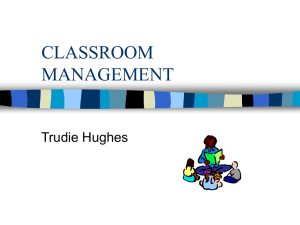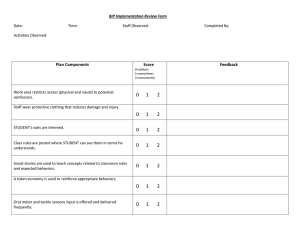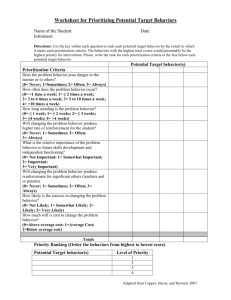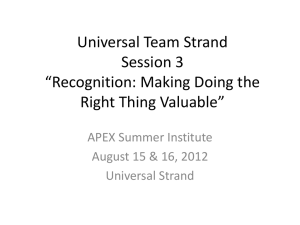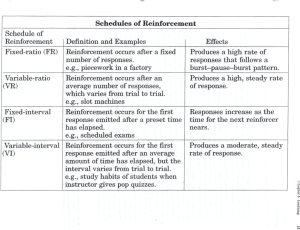Behavior IS Communication
advertisement
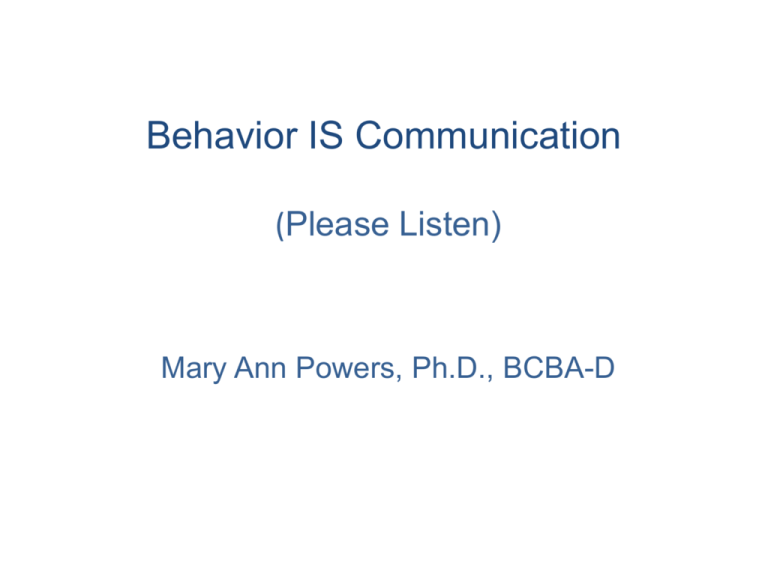
Behavior IS Communication (Please Listen) Mary Ann Powers, Ph.D., BCBA-D Common Behavior Problems for Children with Autism Non-Compliance – verbal or physical Aggression – hit, bite, kick Self - stim behaviors: verbal and physical Screaming, crying, loud sounds & noises Property Destruction Self-Injurious Tantrums – all of the above How to Understand and Change Problem Behaviors: ABC Analysis Antecedent Behavior Consequence Antecedents: When did the behavior happen: Time? Day? Who was there: People – peers & adults What happened right before: Who said & did what? Activity? In addition to Antecedents, other triggers to consider: External events such as: noise levels seating arrangements work load Internal conditions: food deprived sleep deprived not feeling well Antecedent Frequently Associated with Problem Behaviors: Directions to start a task Directions to end a task Told to stop an inappropriate behavior Wanted an item out of reach Denied a requested item Seeing others getting what they want More Effective Antecedent Instructions Give instructions only when you have the person’s attention/focus Clear & concise language Do not beg or give multiple chances Give directions not questions Behavior Every picture tells a story – Paint the picture in words All should SEE the same behavior Does length of behavior count? 2 seconds vs. 20 minutes Does intensity of behavior count? hit no mark vs. blood Does frequency of behavior count? single hit vs. episode of 40+ hits Consequence What happened after the behavior? • What did person do or say? • What did others do or say? • What did you do or say? Possible Functions of Behavior: • To gain attention • To escape a situation • To engage in stimulation • To get a tangible item or activity Behaviors can have multiple functions (depending on the situation)!! More functional examples of Communicative Intent: To request attention, a break, or help To request food, drink, object, activity To indicate pain or confusion To engage in sensory pleasure To protest a directive …. And the intent continues to communicate: access to reinforcement is low difficulties with change or variety difficulties with unstructured time difficulties in waiting choices are restricted ABCs Identified – Now What Future behavior is dependent upon: Reinforcement Reinforcement is ANYTHING that increases the future probability of a behavior - good or a bad. Reinforcement ...can be about getting good things: attention, toys, food …can be about getting negative things: negative attention or reprimands …can be about getting rid of negative things: demands, work, bedtime …can be planned or unplanned …can be expensive, cheap or free Making Reinforcement More Effective Pair yourself with reinforcement delivery Use reinforcers that matter – that are motivating – to the person Deliver reinforcer following response completion, never before Size matters: difficult, new or excellent responses deserve better reinforcers Does the ABC Analysis work with adults and adolescents? Yes! Yes!! and Yes!!! It is all about function, function, and (oh yes) all about the function While the function categories are the same (i.e. attention, tangibles, escape, and sensory), the specific examples can be very different: Things to consider: To be safe, To be happy, To have friends, To be independent, To do work they like, To like where you live, To like to eat specific food, To like where/how you live, To do things in the community, To have choices and earning power, To have an adequate communication system to express needs and wants.
